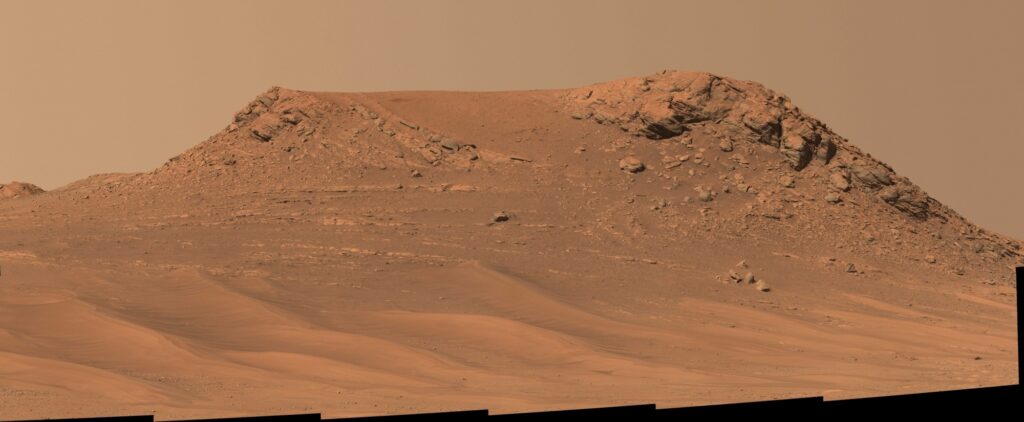Washington, May 12 (IANS) New images taken by NASA’s Perseverance Mars rover show signs of a rollicking river on the Red Planet, one that was deeper and faster-moving than scientists have ever seen evidence for in the past.
Perseverance is exploring the top of a fan-shaped pile of sedimentary rock that stands 250 metres tall and features curving layers suggestive of flowing water.
Stitched together from hundreds of images, two new mosaics suggest a powerful river system, revealing important clues: coarse sediment grains and cobbles.
The images were captured using the Mastcam-Z camera between February 28 and March 9.
“Those indicate a high-energy river that’s truckin’ and carrying a lot of debris. The more powerful the flow of water, the more easily it’s able to move larger pieces of material,” said Libby Ives, a postdoctoral researcher at NASA’s Jet Propulsion Laboratory in Southern California, which operates the Perseverance rover, in a statement.
Scientists have previously dubbed a series of curving bands of layered rock within Jezero Crater as “the curvilinear unit.”
A new image from a location within the curvilinear unit, nicknamed ‘Skrinkle Haven’ proves that the curved layers were formed by powerfully flowing water.
When viewed from the ground, the curved layers appear arranged in rows that ripple out across the landscape. They could be the remnants of a river’s banks that shifted over time — or the remnants of sandbars that formed in the river. The layers were likely much taller in the past.
Scientists suspect that after these piles of sediment turned to rock, they were sand blasted by wind over the aeons and carved down to their present size.
“The wind has acted like a scalpel that has cut the tops off these deposits,” said Michael Lamb of Caltech, a river specialist and Perseverance science team collaborator, in the statement.
“We do see deposits like this on Earth, but they’re never as well exposed as they are here on Mars. Earth is covered in vegetation that hides these layers.”
A second mosaic captured by Perseverance shows a separate location that is part of the curvilinear unit and about 450 metres from Skrinkle Haven.
“Pinestand” is an isolated hill bearing sedimentary layers that curve skyward, some as high as 20 metres. Scientists think these tall layers may also have been formed by a powerful river, although they’re exploring other explanations, as well.
“These layers are anomalously tall for rivers on Earth,” Ives said. “But at the same time, the most common way to create these kinds of landforms would be a river.”
The six-wheeled Perseverance landed on the floor of the 45 kms wide Jezero Crater in February 2021. A key objective for Perseverance’s mission on Mars is astrobiology, including the search for signs of ancient microbial life.

